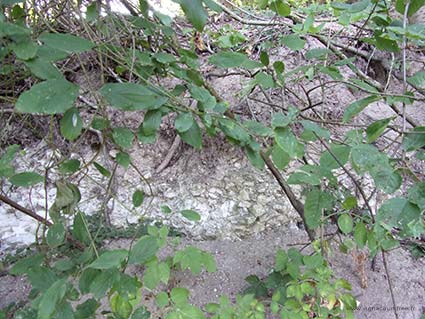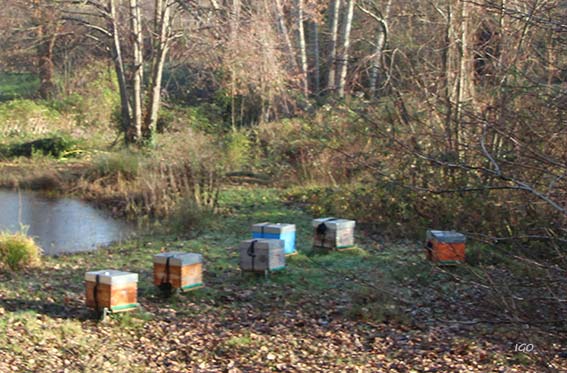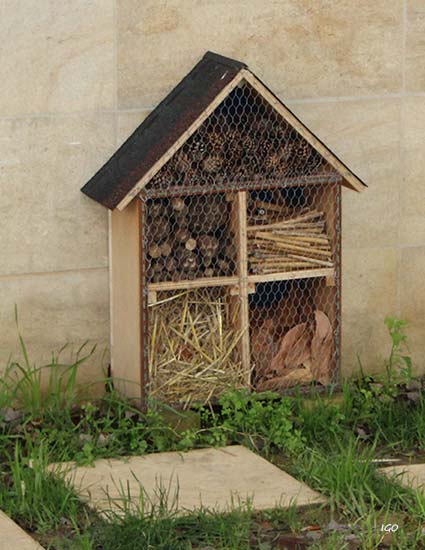Home > Geography > Biodiversity
Biodiversity
In the 1990s, the scientific community used the term biodiversity to define the diversity of natural resources and their mechanisms. Biodiversity is made up of different types of plant and animal species that make up a balanced environment. These are essential benchmarks for human beings, whose aspects evolve each season. Spring begins here at the end of March, and the hottest months are usually between June and August. Fields and wooded areas surround the village. The plant diversity of our region is vast, with a sample of some varieties evoked below.
![]()
The soil in the area is composed of layers of varying thicknesses. The fertile land covers a limestone part, then a layer of white chalk and soft rock consisting of clay and limestone.
The water points collecting run-off water had a wisely thought-out ecosystem, like the reed that once bordered our ponds. This plant helped stabilize the banks, reduce erosion, and filter, purify, and drain wet soils.

Plant species
Mallow flower
A mallow flower is a plant that reappears along paths as pesticide use decreases. It was formerly cultivated on several hectares in the north and exploited by herbalists for medical purposes, such as inflammatory diseases. In the earliest times, the Romans and the Greeks ate a specific variety as a salad.
There are a multitude of species all over the world, and some varieties are more specifically used to decorate flowers.

Mullein
The mullein with yellow flowers still present along the paths is poorly considered. This plant, formerly used for its medicinal properties, provides bees with the nutrients necessary for honey production.
In addition to France, Mullein is well-known in Norway and Ireland. These nations' peasants utilized it to treat their cattle for veterinary purposes. There are several varieties worldwide, particularly in China, Australia, and Canada.

Mullein
Pastel blue - Woad (Isatis tinctoria)
The woad is a plant with yellow flowers. The dyers used the leaves to manufacture the pastel blue shade. The leaves were mashed and ground in the local mills.
The number of woad merchants was significant in Amiens. In addition to England, Scotland, and Ireland, the pastel was ground into powder and transported to the important cities of Rouen, Paris, and Chartres. The guild of "waidiers" allowed Amiens to prosper. They had even been depicted in the form of sculptures in the cathedral.
The leaves of the pastel blue plant, which was also cultivated throughout the Rhine, were dried before being pulverized in mills. The prosperity of Thuringia improved significantly due to this plant as well.
When Vasco de Gama discovered the indigo tree in the fifteenth century, this production lasted until the introduction of indigo blue.
Poppy
This wildflower with bright red petals grows in wheat fields. It is a British custom to wear the poppy in the buttonhole on November 11 in memory of those who died on the battlefield.
Although the most well-known color is red, it is found in different shades around the world, including blue in Nepal, yellow in Wales, and orange in California.

Animal species
The bees
The bee is an essential link in biodiversity. Honey is the first benefit of this insect, but pollination is vital for crops. The bee can forage for 700 flowers a day.
Climate change, intensive agricultural practices, and pesticides threaten its survival. Its disappearance would be dangerous for our food. Bees are precious cultivation aids. Bees like several varieties of plants, such as aromatic plants like thyme, rosemary, sage, mint, lemon balm, lavender, and poppies. These plants grow easily in flowerpots, even for those without a green thumb.
Hives are usually made of cedar, which is considered a repellent against certain parasites.

A few beehives

An insect hotel made of natural materials.
The hedgehog
The hedgehog has excellent hearing. He rolls into a ball whenever he feels in danger.
It is a precious ally for our gardens because it is an insectivore that feeds on larvae, caterpillars, aphids, snails, slugs, and sometimes even field mice.They like ripe fruit, likewise.
He appreciates the undergrowth to build his household and the dry leaves.

The hedgehog
